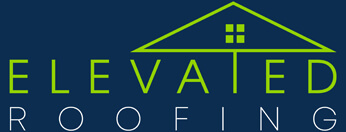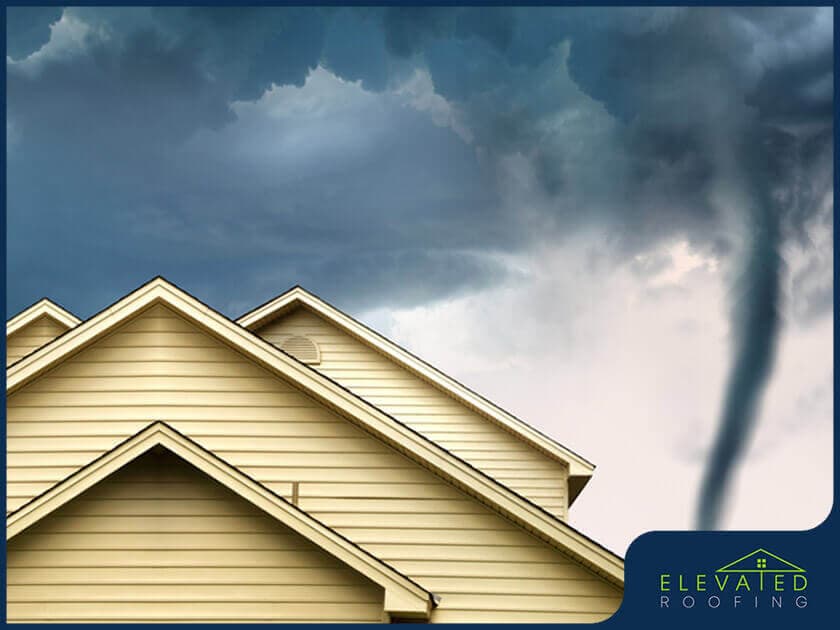Most homeowners don’t spend enough time to inspect their roof for damage. It’s common for residential roofing companies to receive service calls only when the customer’s roof is already leaking, or when some shingles are missing or obviously damaged.
It’s important to understand that your roof is a large part of your first line of defense against the elements and that it is exposed 24 hours a day, every day. At some point, something will go wrong. You might feel confident that your new, high-quality roofing system will last long, but rain, sun, hail, snow, ice, and debris have other plans. This is the reason roofers advise homeowners to take better care of their roofs by signing up for regular inspections and maintenance.
Everyday weather can slowly wear down your roof, but it’s the storms that really cause it the most damage. If a roof is poorly maintained, or not maintained at all, it has a much lower chance of surviving a major weather event.
How a Storm Can Cause Damage to Your Roof
The Scourge of Winter
Many homeowners only start to think about the condition of their roofing system when they witness the first snowfall of winter. If your roof is ill-prepared to handle snow, ice and freezing temperatures, there’s a good chance you’ll be needing a residential roof repair.
Winter is a peak time for roof service calls, so chances are you’ll have to wait until your roofers are free to take care of your roof issue. The fluctuations in temperature (mostly freezing in some areas), combined with the weight of snow, can lead to all sorts of problems, including ice dam formation and leaking. In some cases, shingles become brittle and crack under pressure.
Gutters and downspouts, which you probably don’t clean if you don’t maintain your roof, can get clogged with debris. The water stuck in them will freeze, possibly causing more damage and contributing to ice dam formation.
The Attack of Hail
Hail is another element that can cause damage to just about everything it hits, from your roof to your car and right down to your landscaping. Small, marble-sized hailstones are not harmless. The force with which they hit a target makes all the difference.
Now if golf ball-sized hailstones drop on your roof, imagine all the havoc they could wreak, from knocking the protective granules off the shingles to tearing off complete shingle tabs. If the force of a hailstorm can leave dents on your car, imagine what it can do to your roof.
Your roof material might survive, but the flashings that protect its most vulnerable parts — valleys, edges, penetrations, etc. — are likely to be destroyed by the force of a hailstorm. It’s important to call reputable and professional providers of residential or commercial roofing repair services to assess the damage and apply the necessary repairs or replacement.
It’s a bad idea to use your DIY knowledge to fix the problems caused by hail. In many cases, a DIY enthusiast will miss what professional roofers are likely to spot immediately when they’re inspecting a roof after a hailstorm.
The Punishment of Rain
Roofs are built to withstand regular rains, but when a rainstorm is particularly heavy and persistent, your roof can suffer from the punishment. One or two strong rainstorms are all it takes for shingle granules to be knocked off, whole shingles to be torn off, old gutter systems to fail, and different areas of the roofing system to be penetrated by water.
Most people automatically look up at the ceiling when a strong rain makes all that racket. It’s as if you’re expecting a leak to start forming. This might come into fruition if you failed to maintain your roof the entire year and you didn’t prepare it for such heavy rainfalls.
Tiny holes that you can’t find just by looking at your roof from the ground will lead to leaks, which will become worse over time. Mold and mildew growth, wood rot, wall stains, clumped insulation, ceiling puddles and other issues can start during or after a particularly heavy bout of rain. What’s even worse is it’s often difficult to determine where the leak is coming from unless you have the trained eyes of a residential roof repair professional.
The Unseen Power of the Wind
Most structures cannot withstand the destructive power of an EF4 or EF5 tornado. With wind speeds of up to 200 mph or even higher, such twisters are almost too powerful to comprehend. If you don’t live in an area where tornadoes are uncommon or unheard of, consider yourself fortunate.
However, the wind doesn’t have to reach those speeds to cause issues with your roofing system. Wind uplift is caused by the speed of the wind and the shape of an object — in this case, your home. The smallest imperfections with your roofing system can be exploited by the wind, such as a shingle tab with a slightly lifted edge. That small imperfection can lead to torn-off shingles, which leaves your roof vulnerable. A small puncture can become a large hole in no time.
The problem with strong winds is that it doesn’t just hit your roof, causing small issues to worsen. It can also be strong enough to cause a tree to fall, especially old and massive trees. If a heavy tree falls on your roof during a storm, forget about small punctures. The large damage this will cause to your roof will allow large amounts of water to enter your home.
Why You Need a Professional Roofer
A storm can cause plenty of damage to your home, particularly your roofing system. This is especially true if you were not diligent enough to maintain your roof. Instead of relying on your own inspection, it’s best to call residential roofing companies. There are several benefits to doing this:
- Professional roofers can spot damage that’s “invisible” to untrained eyes. While your own assessment might help identify large holes and missing shingles, only pros can spot the finer details. They also know what they should do to prevent further damage.
- Professionals have the tools, experience, and access to materials so they can handle both large and small areas of concern. They focus on prevention rather than on solutions alone. It’s best to hire a professional roofer to maintain your roof every year and prepare it for severe weather events.
- Professionals can help you handle your insurance or warranty claims.
- Professionals can trace a leak to the source and apply immediate repairs.
- Professionals will help you save time and money in the long term.
In need of a roof inspection, routine maintenance or emergency residential or commercial roofing repair services? Get in touch with Elevated Roofing LLC. Call us at (205) 537-9754 or use this form. Let’s talk about your concern before the next storm hits.

